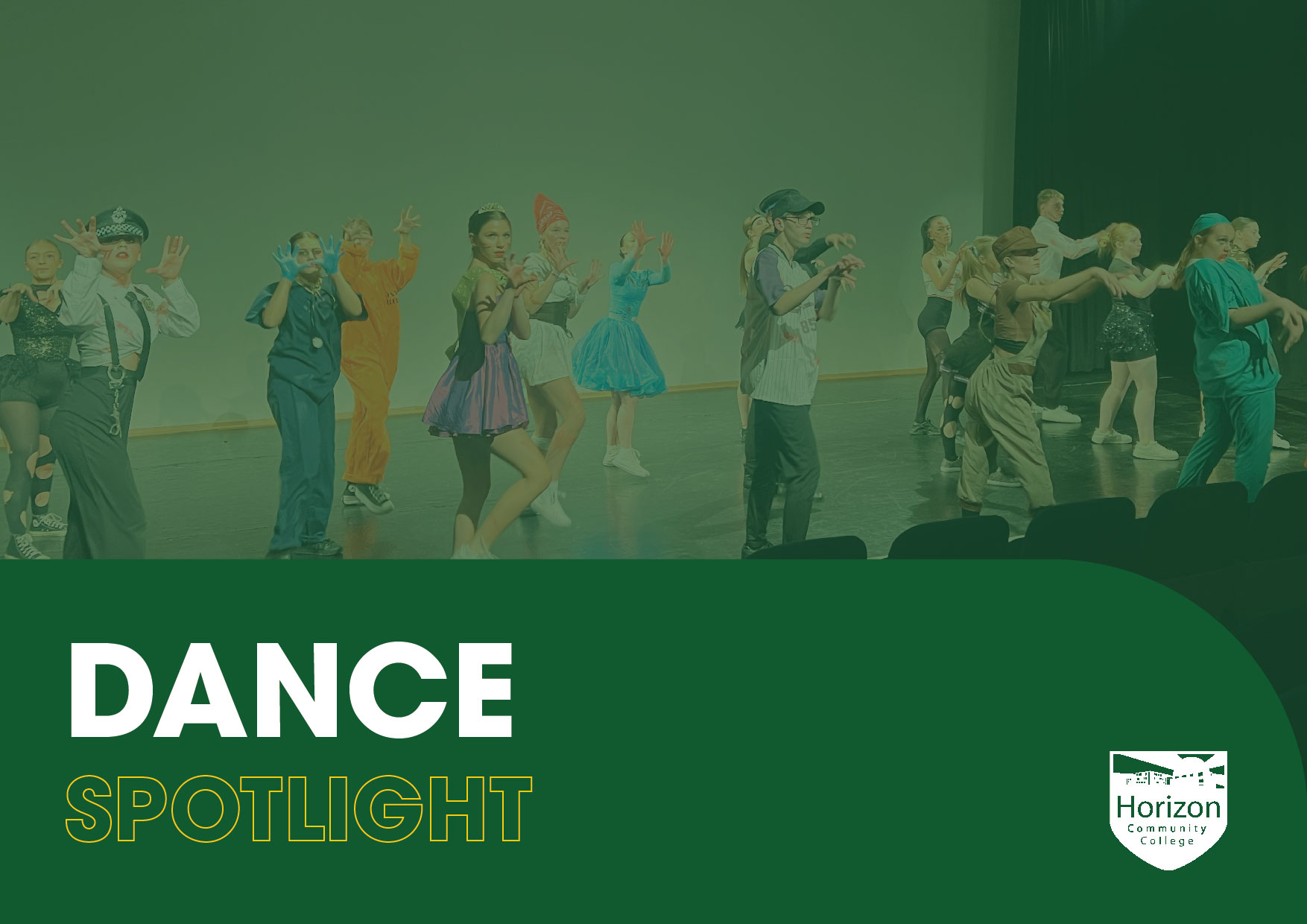CURRICULUM
Dance
Dance Curriculum Intent
Dance, as a discreet subject at Horizon, is more than learning a series of steps to music; it is a way of moving that uses the body as an instrument of expression and communication. Through dance, students are provided with a safe place to express themselves and a creative outlet for their ideas and feelings.
Through Dance students improve their social skills and develop the ability to communicate with others. They learn how to develop trust and cooperation when working with others and how to think creatively, developing solutions to problems as they arise. Students will acquire knowledge and skills through dance research and will gain an appreciation of all styles of dance from different genres and cultures. Students will develop a deep understanding of their own bodies and how they can move, as well as an appreciation of the physical demands of dance and the discipline and training needed to develop these skills. Students will develop confidence in performance through being exposed to; and taking part in performances in a range of professional situations and environments and will understand the contribution that is made by each professional to create a final piece.
Click here to see where Dance can take you
Key Strands
Performance skills
Learning short sequences skills and motifs or short extracts of professional repertoire in a range of styles. Being able to respond to feedback and set targets. Being able to analyse/evaluate their own performance, identifying areas for improvement.
Learning how to work from a range of stimuli-understanding how to go from page to stage-using PIE structure to evaluate ideas, working to a brief.
Choreography Skills
Appreciation
Using PIE structure to analyse key stylistic features of professional repertoire. Exposure to a range of inspiration professional work. Understanding the roles and responsibilities in production and performance and their impact and contribution to an overall piece. Being able to identify the key components of dance/choreographic devices and using correct dance specific terminology.
